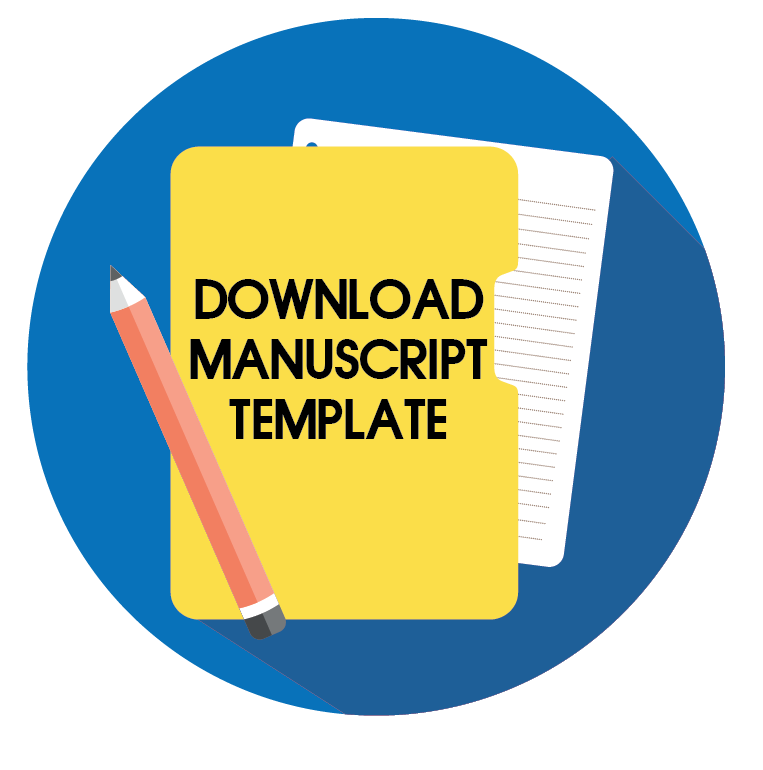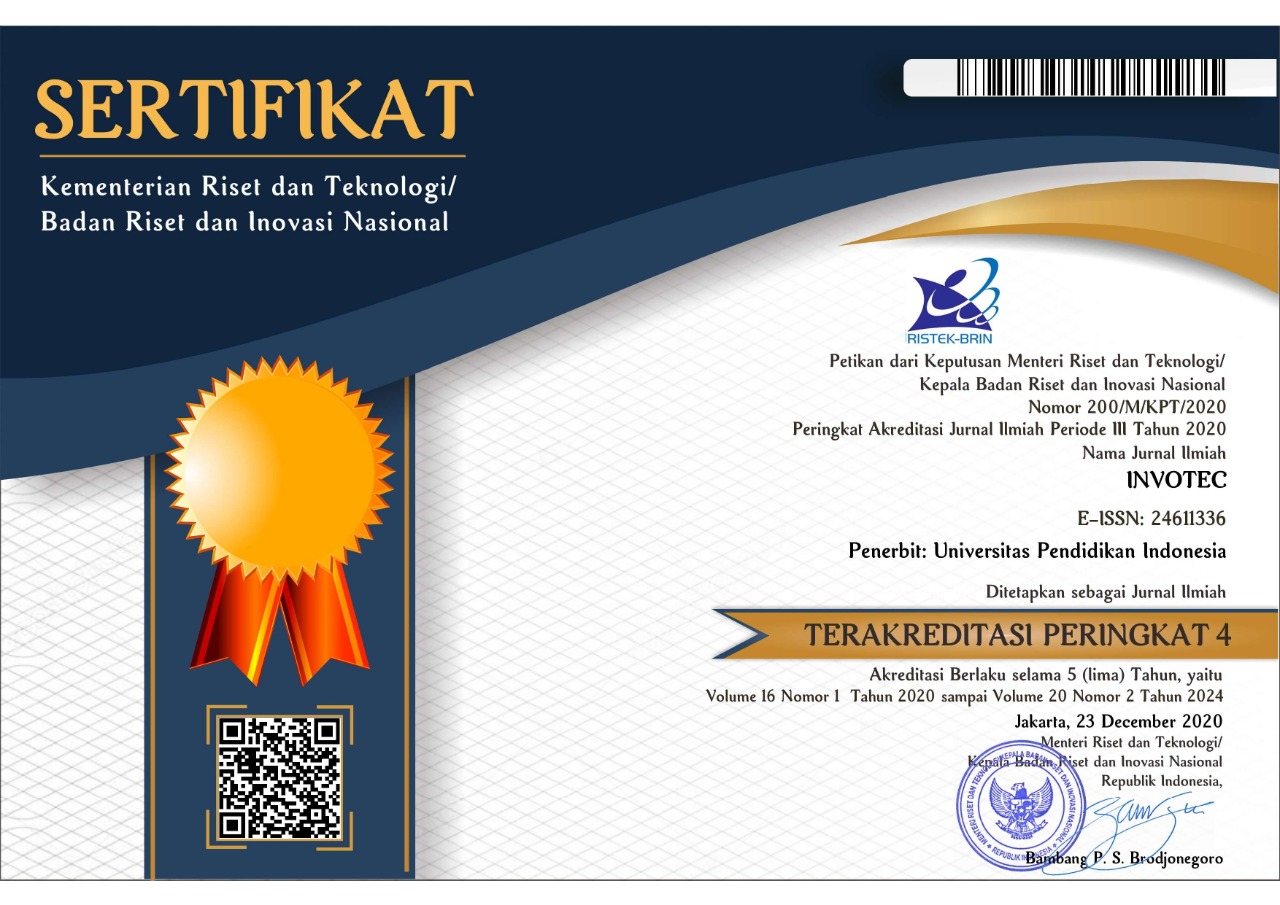AR-NGEUNA 4.0 testing: Augmented reality application for Sundanese traditional food
Abstract
Keywords
Full Text:
PDFReferences
Álvarez-Marín, A., Velázquez-Iturbide, J. Á., & Castillo-Vergara, M. (2021). Technology acceptance of an interactive augmented reality app on resistive circuits for engineering students. Electronics, 10(11), 1286.
Ames, H., Glenton, C., & Lewin, S. (2019). Purposive sampling in a qualitative evidence synthesis: A worked example from a synthesis on parental perceptions of vaccination communication. BMC Medical Research Methodology, 19(1), 1–9.
Burbules, N. C., Fan, G., & Repp, P. (2020). Five trends of education and technology in a sustainable future. Geography and Sustainability, 1(2), 93–97.
Campbell, S., Greenwood, M., Prior, S., Shearer, T., Walkem, K., Young, S., Bywaters, D., & Walker, K. (2020). Purposive sampling: complex or simple? Research case examples. Journal of Research in Nursing, 25(8), 652–661.
Chen, Y. (2019). Effect of mobile augmented reality on learning performance, motivation, and math anxiety in a math course. Journal of Educational Computing Research, 57(7), 1695–1722.
Davidavičienė, V., Raudeliūnienė, J., & Viršilaitė, R. (2021). Evaluation of user experience in augmented reality mobile applications. Journal of Business Economics and Management, 22(2), 467–481.
Gargrish, S., Mantri, A., & Kaur, D. P. (2020). Augmented reality-based learning environment to enhance teaching-learning experience in geometry education. Procedia Computer Science, 172, 1039–1046.
Ibili, E., Resnyansky, D., & Billinghurst, M. (2019). Applying the technology acceptance model to understand maths teachers’ perceptions towards an augmented reality tutoring system. Education and Information Technologies, 24, 2653–2675.
Jiang, Y., Wang, X., & Yuen, K. F. (2021). Augmented reality shopping application usage: The influence of attitude, value, and characteristics of innovation. Journal of Retailing and Consumer Services, 63, 102720.
Kamińska, D., Sapiński, T., Wiak, S., Tikk, T., Haamer, R. E., Avots, E., Helmi, A., Ozcinar, C., & Anbarjafari, G. (2019). Virtual reality and its applications in education: Survey. Information, 10(10), 318.
Kepmenkes Keselamatan Pasien Rumah Sakit. (2011). No Titlep. Phys. Rev. E, 24.
Lee, J., Kaipainen, K., & Väänänen, K. (2020). Local foodie: Experience design of a mobile augmented reality application for tourists to encourage local food consumption. Proceedings of the 23rd International Conference on Academic Mindtrek, 110–119.
Lim, K. C., Selamat, A., Alias, R. A., Krejcar, O., & Fujita, H. (2019). Usability measures in mobile-based augmented reality learning applications: a systematic review. Applied Sciences, 9(13), 2718.
Oyman, M., Bal, D., & Ozer, S. (2022). Extending the technology acceptance model to explain how perceived augmented reality affects consumers’ perceptions. Computers in Human Behavior, 128, 107127.
Papakostas, C., Troussas, C., Krouska, A., & Sgouropoulou, C. (2021). Measuring user experience, usability and interactivity of a personalized mobile augmented reality training system. Sensors, 21(11), 3888.
Papakostas, C., Troussas, C., Krouska, A., & Sgouropoulou, C. (2022). User acceptance of augmented reality welding simulator in engineering training. Education and Information Technologies, 27(1), 791–817.
Pellas, N., Fotaris, P., Kazanidis, I., & Wells, D. (2019). Augmenting the learning experience in primary and secondary school education: A systematic review of recent trends in augmented reality game-based learning. Virtual Reality, 23(4), 329–346.
Saidin, N. F., Halim, N. D. A., & Yahaya, N. (2015). A review of research on augmented reality in education: Advantages and applications. International Education Studies, 8(13), 1–8.
Sudirman, S., Mellawaty, M., Yaniawati, P., & Indrawan, R. (2020). Integrating local wisdom forms in augmented reality application: Impact attitudes, motivations and understanding of geometry of pre-service mathematics teachers’.
Szymkowiak, A., Melović, B., Dabić, M., Jeganathan, K., & Kundi, G. S. (2021). Information technology and Gen Z: The role of teachers, the internet, and technology in the education of young people. Technology in Society, 65, 101565.
Tashko, R., & Elena, R. (2015). Augmented reality as a teaching tool in higher education. International Journal of Cognitive Research in Science, Engineering and Education, 3(1), 7–15.
Wang, X.-M., Hu, Q.-N., Hwang, G.-J., & Yu, X.-H. (2022). Learning with digital technology-facilitated empathy: An augmented reality approach to enhancing students’ flow experience, motivation, and achievement in a biology program. Interactive Learning Environments, 1–17.
Yavuz, M., Çorbacıoğlu, E., Başoğlu, A. N., Daim, T. U., & Shaygan, A. (2021). Augmented reality technology adoption: Case of a mobile application in Turkey. Technology in Society, 66, 101598.
Yulia, C., Hasbullah, H., Nikmawati, E. E., Muktiarni, M., & Mubaraq, S. R. (2021). Development of Augmented Reality (AR Ngeuna 4.0) for adolescents nutrition education medium based on Sundanese food. IOP Conference Series: Materials Science and Engineering, 1098(2), 22094.
DOI: https://doi.org/10.17509/invotec.v19i1.59809
Refbacks
- There are currently no refbacks.
Copyright (c) 2023 INVOTEC

This work is licensed under a Creative Commons Attribution-ShareAlike 4.0 International License.
This journal provides immediate open access to its content on the principle that making research freely available to the public supports a greater global exchange of knowledge.

This work is licensed under a Lisensi Creative Commons Atribusi-BerbagiSerupa 4.0 Internasional.




